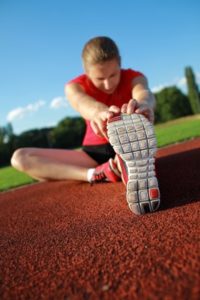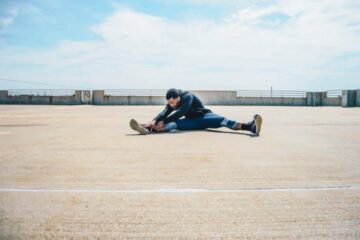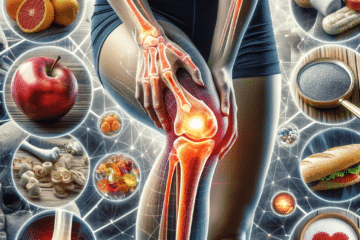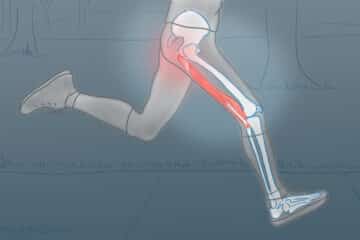
The debate continues — does stretching diminish the risk of injury?
 The NY Times published a piece recently on the “Right Reason to Stretch”. If you read through to the end… the bottom line is, if you are stretching and like it — great, please continue. If you are not stretching –fine, stop feeling guilty.
The NY Times published a piece recently on the “Right Reason to Stretch”. If you read through to the end… the bottom line is, if you are stretching and like it — great, please continue. If you are not stretching –fine, stop feeling guilty.
The reason, there is little evidence that stretching is of benefit in limiting or preventing soreness or injury. One significant caveat is simply that a perfectly designed research study simply hasn’t been performed, so this remains a very controversial topic.
There have been studies which show that static stretching — where you reach, hold a position and then relax may actually cause muscle weakness, and a strength imbalance.
Dynamic stretching, where the muscle being stretched remains in motion, theoretically hold more potential to prevent injury — but again, the jury is out.
Examples of Dynamic stretching… Discussed on Wikipedia, but better described here — include
Ankle pops Lightly bounce off both toes while keeping the knees very slighty bent. This is very similar to a skipping motion, except that it is performed while moving forward. The idea is to introduce progressively more range of motion as you move through the prescribed distance.
High knees This is basic running form while bringing the knees up higher than normal – ideally beyond your waistline. Aim to keep your feet moving as fast as possible and your ankles, knees, hips and shoulders facing forwards.
Butt kicks
Similar to high knees except you keep your thighs perpendicular to the ground while kicking your heels up towards your backside. Again, move fast and keep ankles, knees, hips and shoulders in alignment.
Carioca Moving laterally to your left, cross your right foot in front of your left, then step with your left, then cross your right foot behind the left and repeat. Aim for as much hip rotation as possible and keep those feet moving fast! If performed correctly, this looks like a new dance move!
Step slide Assume a low athletic position with your feet slightly wider than shoulder-width apart, your ankles, knees, hips and shoulders facing forwards and your knees slightly bent. Pushing off your right leg, slowly step laterally to the left with your left leg, then slide your right leg back to its original position, making sure your feet don’t touch or cross. This is similar to a ‘defensive slide’ in basketball and the coaching cue when performing it is ‘step – slide’.
Glute walk In the process of your walk, put your left hand on your left knee and right hand on your left ankle, then pull both in towards your chest. Take a step and repeat on the other leg.
Back pedal Run backwards maintaining a little bit of a forward lean (shoulders over your toes) to prevent falling. Really ‘reach back’ as far as you can with each step to help stretch the hip flexor muscles.
Frankenstein march Keeping your left leg straight, kick it up in front of you as high as you can, trying to tough the fingertips of the opposite arm – basically a straight leg march – then repeat with the right leg. This is an excellent way to increase hamstring flexibility.
Knee hug While walking forward, hug your left knee into your chest, then step and repeat on the right leg, continuing with alternate legs. This is an excellent way to loosen up the glutes and hips.
Pointers Keeping your left leg straight (and right leg bent) and left foot pointed upwards, reach down with your right hand to try to touch your left toe. Then take a step and repeat on the other side. This is another excellent movement for enhancing hamstring and low back flexibility.
Quad walk While walking forwards, pull your left heel in to your buttocks, then step and repeat with the right leg, continuing with alternate legs. This is ideal for loosening up the quadriceps and hip flexors.
Low lunge Step forward with your left leg into a lunge position (ankles, knees, hips and shoulders facing forward, torso upright) trying to place your left elbow on the ground as close to your left heel as possible.
Over the fence Facing in the opposite direction to the way you want to travel, raise your left knee as high as possible and rotate it behind you as if you were trying to walk backwards and step over an imaginary fence. Repeat on the right leg and continue with alternate legs.
Do you have questions regarding an Orthopedic injury or longevity?
Do you want to talk to an expert who can listen to you for 45-60 minutes and explain the options in detail?
Dr. Howard Luks offers remote guidance sessions to review your X-ray or MRI images and explain your options.
Dr. Luks has also received hundreds of requests for educational sessions on the topics discussed in his book, Longevity Simplified.
Inchworm Assume a push-up position on the ground, and walk your feet close to your hands while keeping the legs as straight as possible. Then return to the start position. Repeat over the prescribed distance, making sure your hands and feet never leave the ground.
Scorpion Lie face down on the ground with arms extended out to the sides, palms facing down, so your body forms a ‘T’ shape. Maintaining this facedown position and keeping your shoulders flat on the ground, bring your left heel and swing it back towards your right hand in a reverse twisting motion. Repeat on the other leg.
Runners … take notice….
One last caveat… Those factors which do increase risk of injury include: BMI (the heavier the runner, the higher the risk of injury); age (increasing age, increasing injury risk); average miles per week (higher mileage, higher injury rate); history of chronic injury or injury within four months of initiating the study. And this study did show that people who switched their normal pre-run routines were more likely to become injured than those randomized to the group adhering to their normal routine. The group found to be at the highest risk for injury were those runners who normally stretched and suddenly stopped stretching.
Bottom Line: There is not enough research or literature to suggest that stretching is beneficial at preventing soreness and injury … yet. Until then, if you enjoy it… please continue. But if you are not an active stretcher … don’t sweat it. The fact that you are exercising far outweighs any risk you may be taking by not stretching.
IF you live outside of Dutchess or Westchester County,NY, feel free to click the link below to book an online virtual discussion













